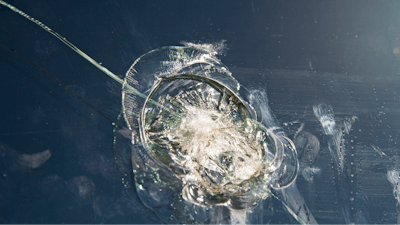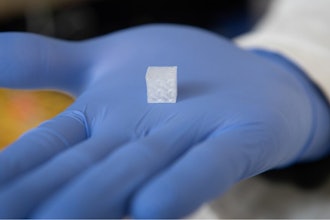
Bulletproof glass, also known as "bullet-resistant glass," is a type of strong, transparent material made up of sheets to prevent it from shattering or rupturing when confronted by gunfire. It's usually made with one of three materials: tempered steel and plastics, polycarbonates (plastic), or laminated glass. In this article, we'll explore how bulletproof glass is manufactured and the different types that exist today. We'll also talk about the protective properties that these materials have and what types are used for what purposes.
How It's Made
The vast majority of bulletproof glass today is manufactured with tempered steel and/or polycarbonates in addition to laminated glass, but it was once made only with laminated glass. The first bullet-resistant windshields were made in 1939 by the Swedish firm Bofors; they used a simple form of laminated glass. It proved quite successful, so Bofors began making windshields for military vehicles, which led to the issue of bulletproof armor vests behind the driver and passenger seats.
1942 saw the first known use of layered glass that could withstand beatings. This type of laminated glass was manufactured with varying thicknesses, ranging from 0.1 mm (0.004 in) to 0.15 mm (0.006 in). It wasn't until 1953 that the British-based glass manufacturer Pilkington created laminated glass that used polyvinyl butyral, a plastic, and stretched acrylic hardened by high temperature. The new material was called Armax and was the first of its kind made specifically for bulletproof use.
Armax became widely used throughout the 1960s and 1970s as a bulletproof product with numerous uses. These uses included everything from windows on cars to police stations, banks, businesses and other government buildings. The American company Plexxglas tried to market its polycarbonate bulletproof glass, but it wasn't widely used until the 1990s.
How Does It Work?
Bulletproof glass doesn't just stop bullets; it also stops anything else, too. Its protection is derived from simple physics that dictates how materials deform when they're struck by a bullet. When the projectile strikes a material of sufficient resistance, it pushes against the material in some way. Depending on how hard this resistance is and what direction the projectile's force is coming from, the force can either add or subtract from its initial momentum.
In the case of laminated glass, it is made up of thin sheets of glass (usually 1.5 mm to 3 mm thick) that are bonded together via adhesives that allow the pieces to break into large fragments if they're struck. Despite its vulnerability, these fragments don't have enough strength to penetrate through a car's body, and so the glass remains intact.
Bulletproof glass made with tempered steel or polycarbonate has similar properties. It's used for many areas with potential points of entry like doors, windows, or partitions because its high strength and low weight means that it can be effectively distributed in volume whereas laminated glasses can't be efficiently utilized in such locations (like pilings).
Tempered steel and polycarbonate are used because they're strong enough to stop projectiles without breaking. The carbon in polycarbonates, for example, makes the material highly resistant to impact.
Has Bulletproof Glass Ever Failed?
Bulletproof glass has been in the limelight for a long time now, and it's one of the most common materials used in windows or any other construction. Bulletproof glass is made from two panes of glass with an intermediate layer of polycarbonate or laminate. The layers are fused together to form a strong, rigid material.
But what happens if bulletproof glass ever fails? Surprisingly, it's not as uncommon as you might think!
Cases in which bulletproof glass has failed can be traced as far back as the Great Depression in the 1930s when prohibition officers were shot at by bootleggers. The most recent incident happened recently in 2011 when a group of gangsters tried to rob a jewelry store in California – and their gunfire shattered the glass. Other cases include:
- A woman fired several shots through her boyfriend's windshield to get him away from another woman in 2010. Her bullets penetrated two layers of the laminated glass.
- In 1991, three armed men tried to rob a Brooklyn liquor store and shot through the door. After that incident, it was concluded that a .44 magnum could easily penetrate five layers of laminated glass.
- In 2010, a man in Pennsylvania tried to shoot at his ex-wife from his car, but he ended up shooting through the glass of her living room. He hit her sofa and the wall on the other side of the room.
- A few other incidents include a man shooting at SWAT team members in 2010 using a .300 Winchester Magnum rifle that passed through two layers of laminated bulletproof glass and struck a team member in the chest. Another man shot at a police helicopter in 2007 using an AR-15 assault rifle.
It's important to note that not all bulletproof glass is created equal. In most cases, glass failures happen when the bullet travels at a high velocity and hits the glass directly. At that speed, it's expected that it could punch through the glass with ease.
Also, cheaper layers of laminate and polycarbonate may shatter or explode upon impact, making penetration possible before shattering. Another reason why failure can happen is because of changing circumstances within the bulletproof panel itself and external factors such as temperature changes or impact on the other side of the window or door.






















